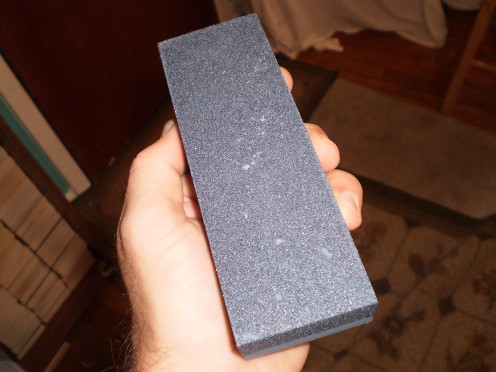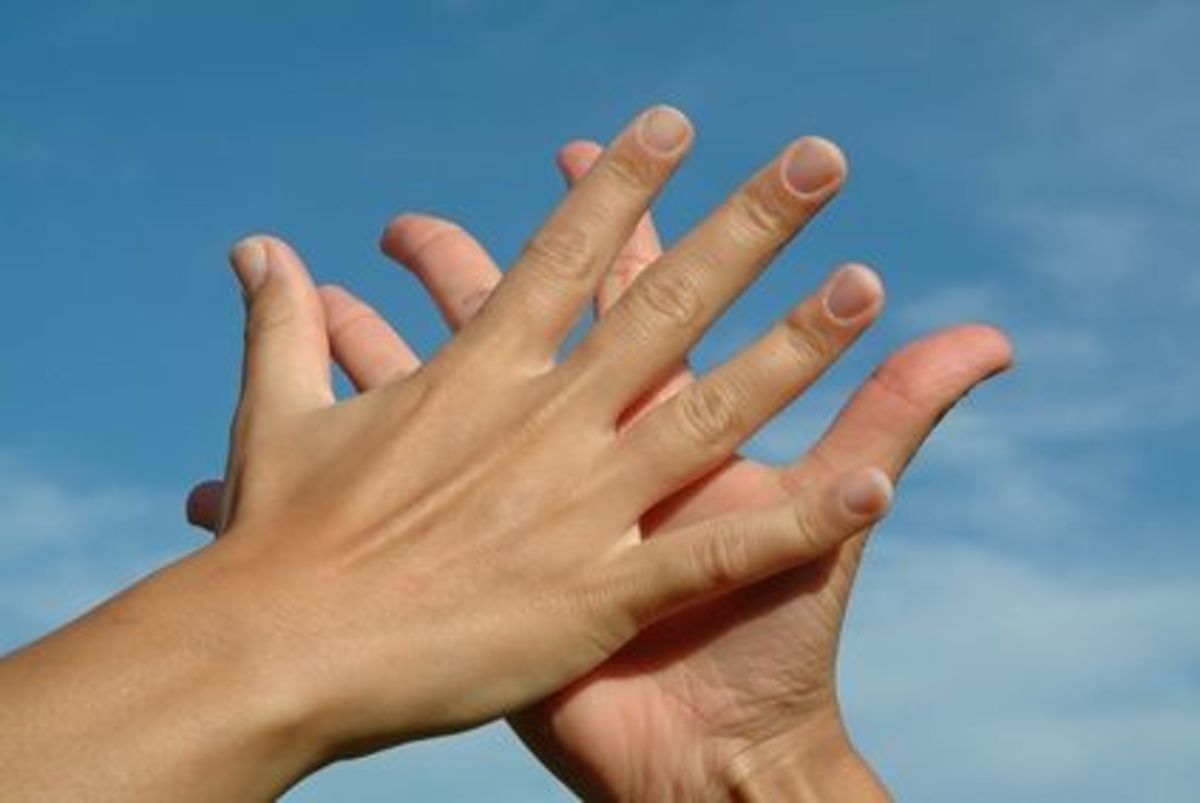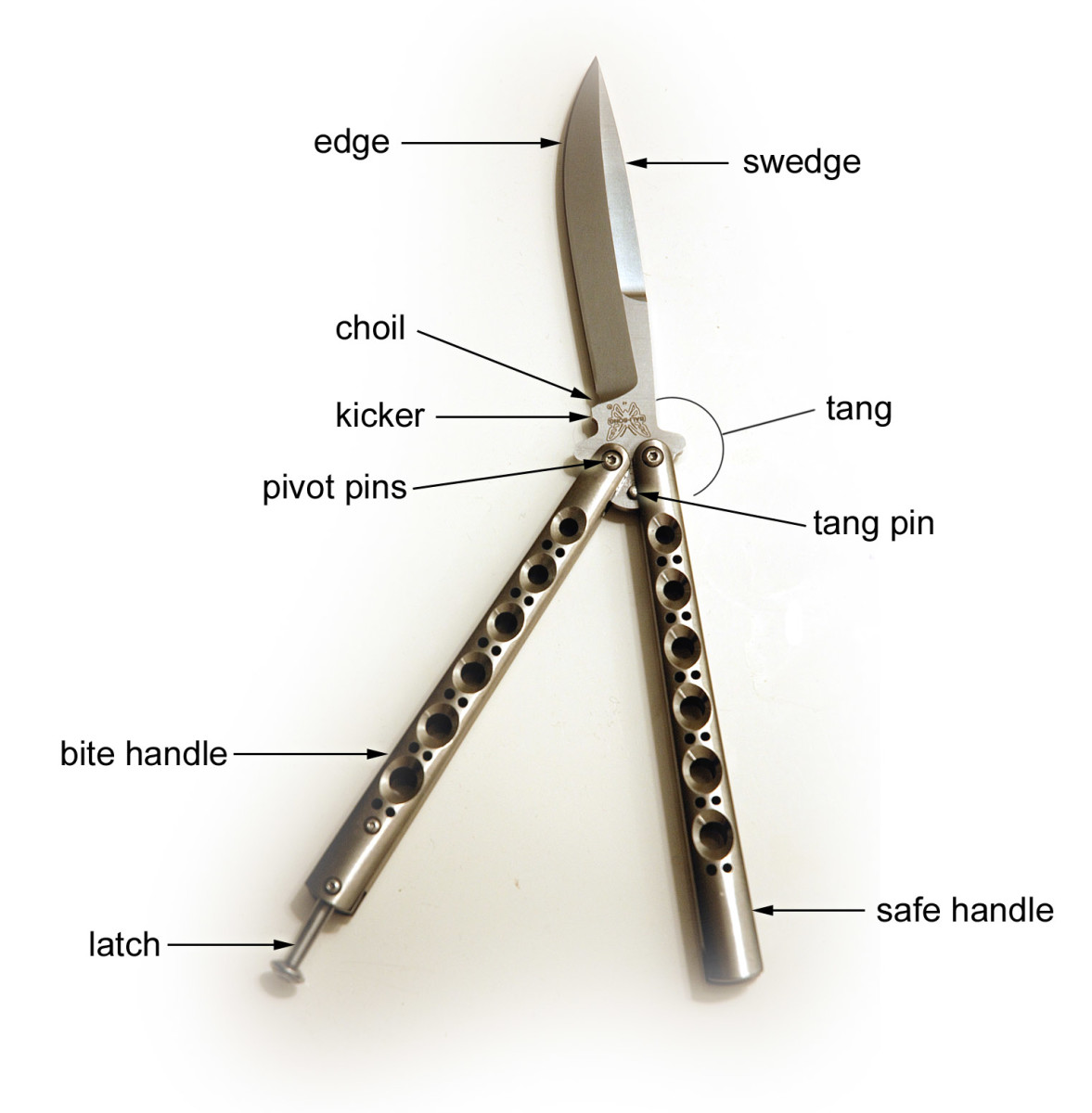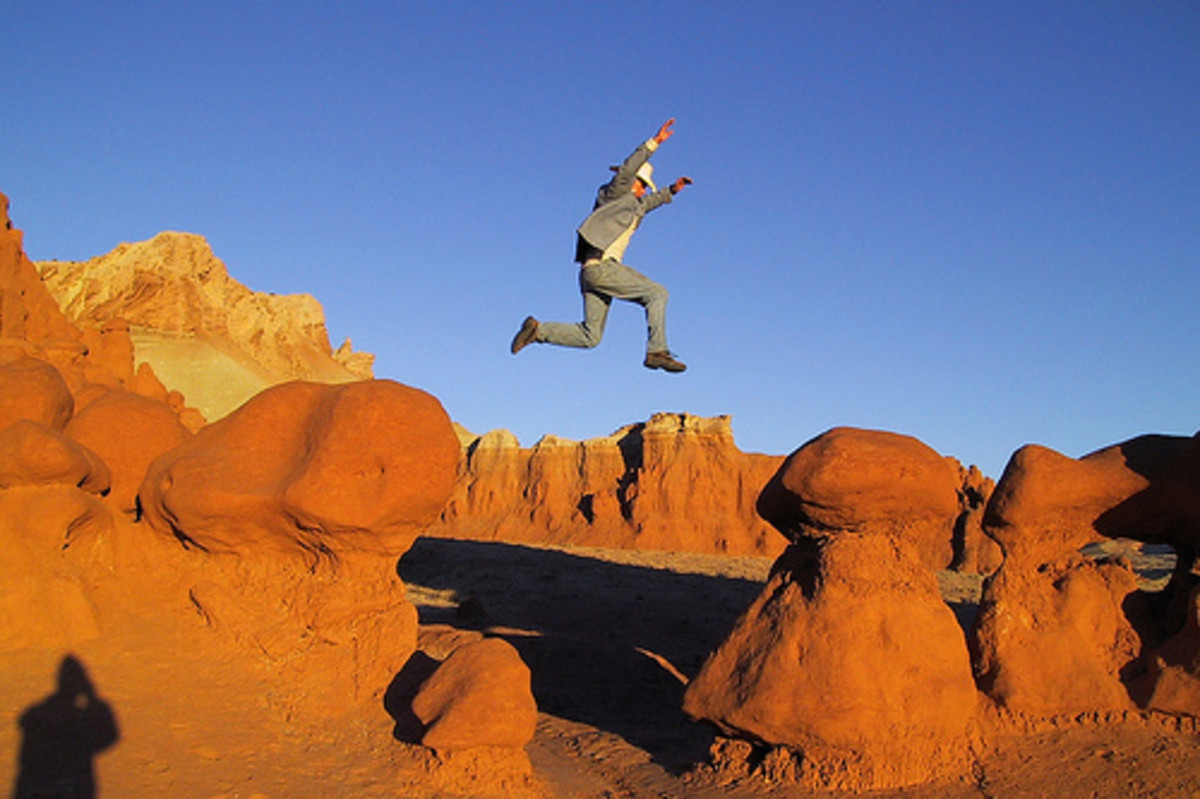Sharpening Your Knife
Sharpening Stone

How To Sharpen Knives
There comes a time in everyone’s life where they will need to sharpen a knife. It makes no difference if it is for a kitchen knife or a pocket knife. The process is very simple depending on what method you choose to use. I prefer a sharpening stone but you can also use a butchers steel. You can purchase a sharpening stone or a butcher’s steel from any local retailer. If you buy a sharpening stone you should get one with two sides to it, a medium course side and a fine course side. The medium course side will allow you to put an edge on the blade while the fine course side will allow you to hone the blade to a dangerous level of sharpness. A butcher’s steel only comes in one coarse and is specifically designed for rapid honing of a blade.
The Sharpening Stone
When you first discover that you need to sharpen a blade on a knife the first thing to do is get a sharpening stone. If you already have one then you can get to work immediately. Grab the stone in your non dominant hand just like the picture and the knife in your dominant hand. Make sure the blade of the knife is facing you and the stone. Some sharpening stones are designed for wet sharpening while others can be used dry, still some are both. If it is a wet stone you need to figure out if it is water or oil. For this article I will cover the dry stone. With the stone in your non dominant hand and knife in your dominant hand run the blade of the knife down the stone in an arc like manner—make sure the knife is held at a forty-five degree angle.
Once those strokes are finished you can reverse the knife and push the blade up the stone. The important thing to remember is to turn the knife so the other blade is on the stone. I prefer to use a number method with knife sharpening. For instance I will sharpen one side of the knife ten times and then reverse the blade and sharpen that side ten times. Repeat this process as many times and needed to sharpen the knife. A knife is sharp when you can cut a single sheet of paper by holding the top and running the knife down. If it cuts it is sharp, if not then keep going until it is sharp.
Hubchallenge

The Butcher's Steel
The Butcher’s Steel
The butcher’s steel is a little easier to use and is specifically designed for knives that already have a blade on them. If you have a knife that was sharp once and now it is just a little dull then the butcher’s steel is the right choice. Simply grab the steel by the handle in your non dominant hand and the knife in your dominant hand. The butcher’s steel has a handle on it that protects your hands from cuts so make sure your hand is underneath the handle. Because of the fact that the butcher’s steel is round you don’t have to fool around with turning the knife for each side. Start at the tip of the butcher’s steel with the knife and blade facing you, then run the blade down the shaft of the butcher’s steel. It is best if you start your down stroke with the bottom of the knife blade at the tip and then bring the knife down while pulling the blade away from the steel. That way you catch the entire blade of the knife across the steel. Then come back up to the top of the butcher’s steel and on the other side and repeat. The above is considered one stroke and gets both sides of the knife. With a butcher’s steel ten strokes is generally enough to sharpen a kitchen knife.
There are other methods of knife sharpening but these are the oldest and truest way to hone a blade. Of course back in ancient times they used similar methods to sharpen their swords but one other old way is with a sharpening wheel.










